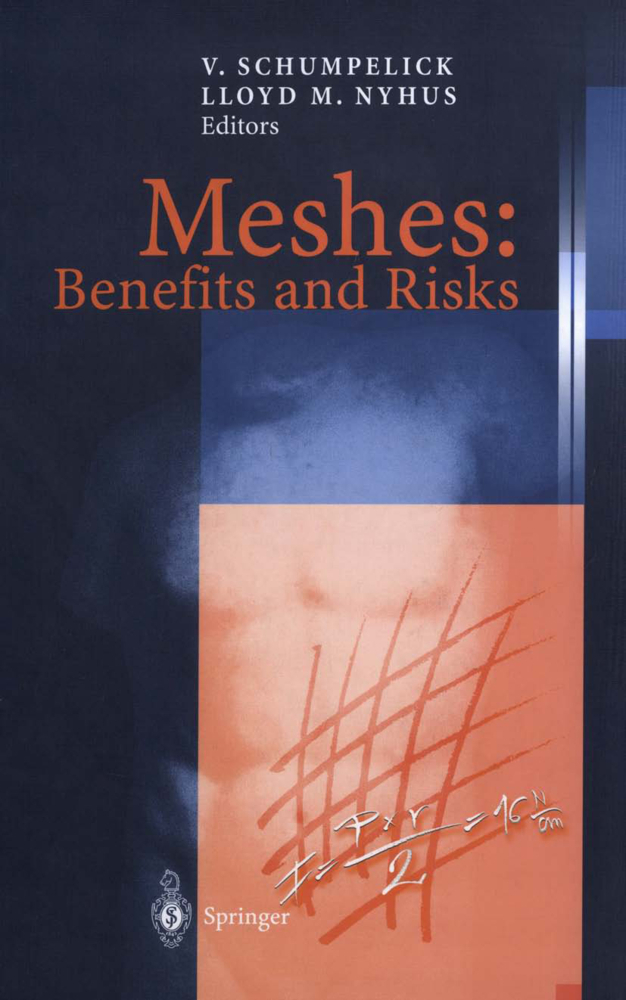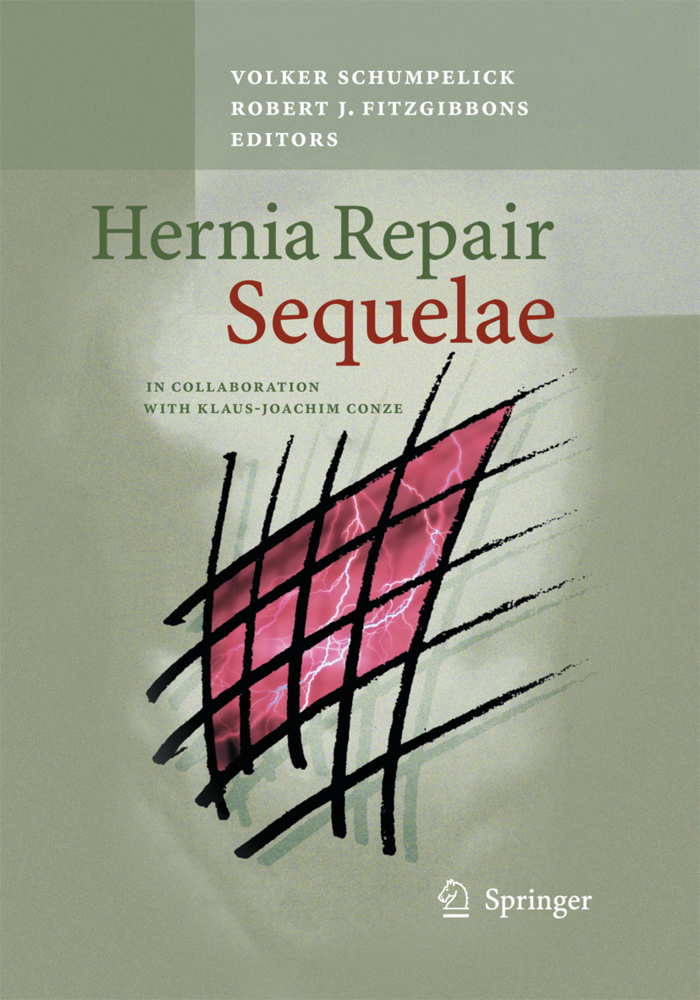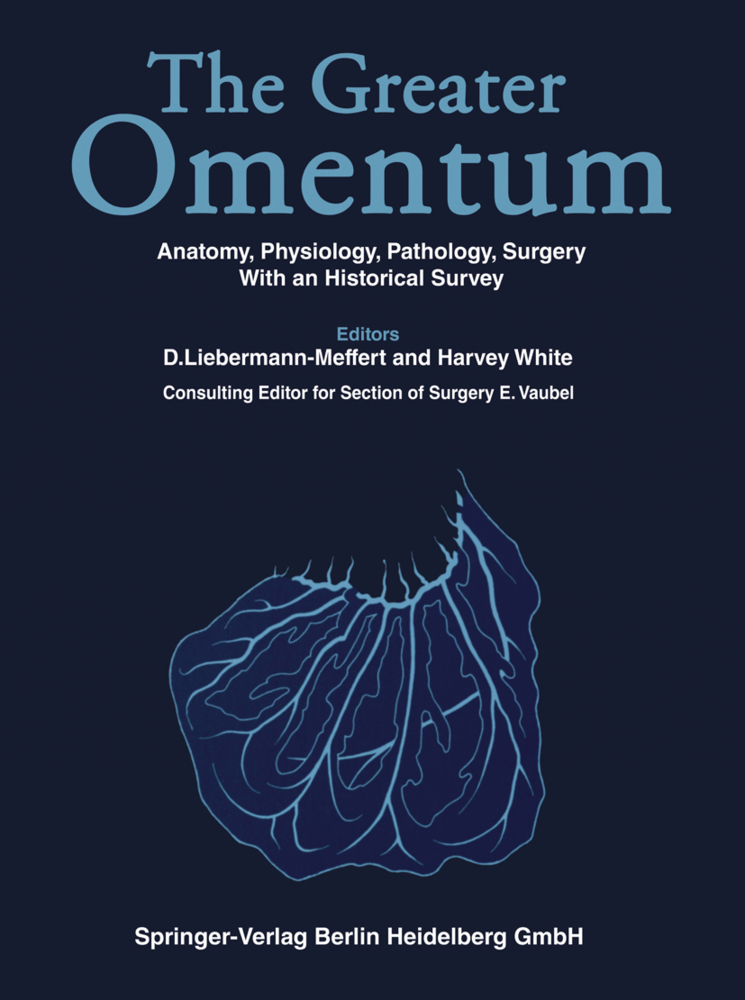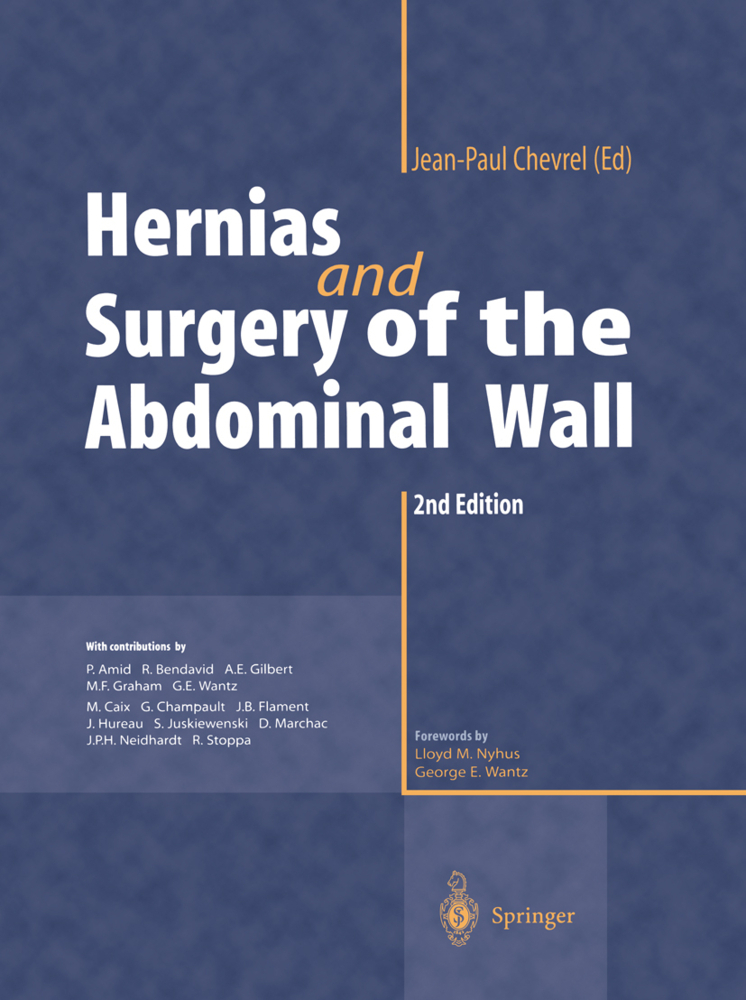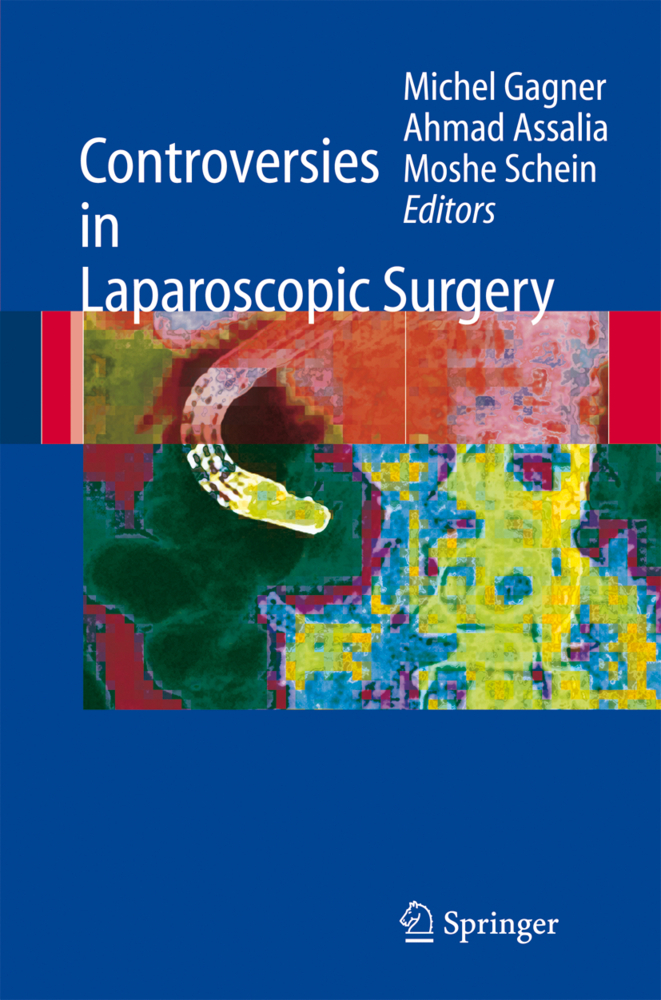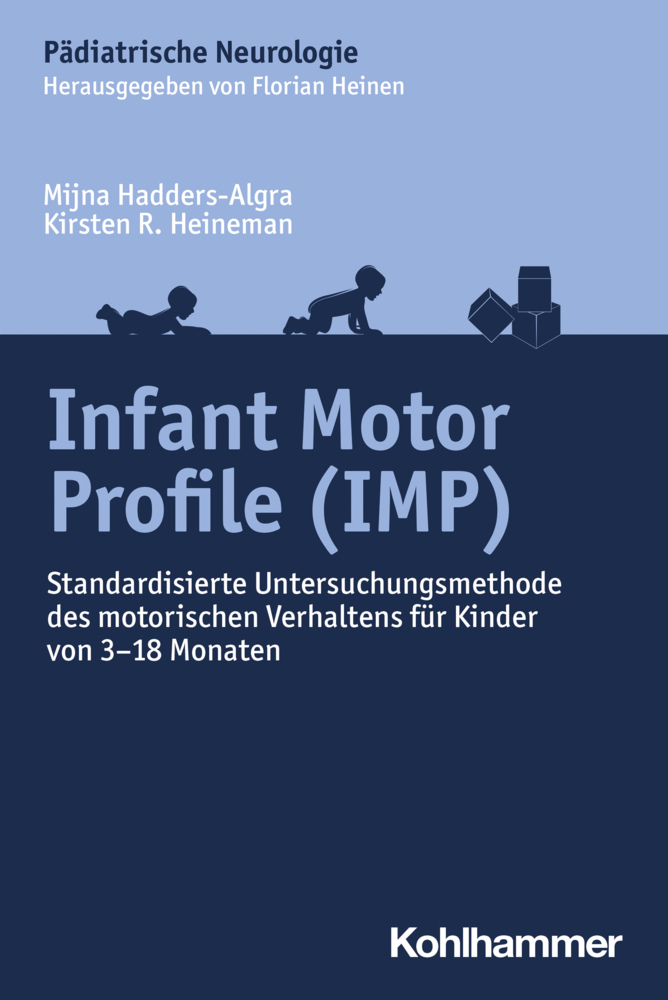Meshes: Benefits and Risks
Meshes: Benefits and Risks
The 3rd Suvretta meeting in January 2003 was intended to give an overview of the of meshes in hernia operations. After the first meeting in 1995 on Ingui current use nal Hernia and the second on Incisional Hernia in 1998, the current congress was focused on the benefits and risks of hernia meshes, the reason being that meshes have more and more become the standard in open as well as in laparoscopic hernia operations. During the past 10 years new indications for the use of mesh as well as new types of mesh have been developed. Considerable experience with meshes has been published in the literature, including controlled trials of different results, dif ferent techniques, and last but not least, case reports of complications. We there fore felt it was timely and appropriate to hold a state-of-the-art meeting on meshes used in hernia curative procedures. During 3 intense working days which included presentations, demonstrations, and extensive discussions, the current role and the future potential development of artificial mesh implants were discussed by both traditional and laparoscopic sur geons. The most renowned hernia specialists of the world came together to discuss the use of meshes relating to construction, material, technique, experimental stu dies and clinical results. Each participant was invited to give a special talk on his favorite subject for discussion among the attending specialists.
2 Risk Factors Predisposing for the Development of Incisional Hernias
3 Expenses and Profits: Economical Aspects of Hernia Surgery
II Reasons for Recurrence: a Pathophysiological Approach
4 Recurrences: the Fault of the Surgeon
5 The Fault(s) of the Patient: Scar Reaction and Biological Recurrence
6 Collagen - the Crucial Cause?
7 Pharmacotherapy of the Wound - Prevention of Hernia?
III The World of Mesh
8 Textile Variations and Characteristics of the Plastic Meshes
9 Polypropylene: the Standard of Mesh Materials
10 Polyester Mesh - a French Solution?
11 ePTFE: Worth the Price?
12 PVDF: a New Alternative?
13 The World of Mesh
IV Anatomic Basics
14 The Abdominal Wall - Where to Place the Mesh?
V Mesh Biology
15 Pathophysiology and Pathology of the Foreign-Body Reaction to Mesh Implants
16 Long-term Inertness of Meshes
17 How to Construct a Mesh? Impact of Structure, Filament and Pore Size for Tissue Ingrowth
VI Mesh-Related Complications: Exception or the Rule?-Impact of Technique and Material
18 Mesh Related Problems - How to Objectify
19 Shrinkage: Fake or Fact?
20 The Catastroph: Mesh Infection and Migration with Fistula Formation - Life Long Risk?
21 Prevention of Adhesion - Just an Illusion?
22 Does the Mesh Damage the Spermatic Cord?
23 Complaints - Usual Complications of Meshes?
24 Foreign-Body Carcinogenesis of Surgical Meshes
VII Indications for Mesh Repair Today
25 Mesh Repair in the Groin: for Every Hernia at all Ages?
26 Mesh Repair in the Abdominal Wall: Are There Mesh-Free alternatives?
27 Mesh-Reinforced Repair of Diaphragmatic Hernia
28 Parastomal Hernia: Prevention and Treatment
29 Indications for Mesh Repair: Mesh Repair for Laparostomy - an Underestimated Procedure
30 The Use of Prosthetic Mesh for the Pediatric Hernia Repair
31 Meshes in Reconstructive Plastic Surgery
VIII Actual Guidelines for Mesh Repair: Why to Prefer a Certain Technique?
Open Technique in the Groin
32 Can the Lichtenstein Tension-Free Repair Wipe Out Hernia Recurrence?
33 Vypro II in Lichtenstein Repair: Risk or Benefit?
34 TIPP, an additional, alternative or a dispensable technique?
35 Prolence Hernia System: Quick and Effective Repair for Inguinal Hernia
36 The Preperitoneal Prosthetic Approach for the Repair of Recurrent Inguinal Hernia: Is There Still a Place for the Wantz Technique?
37 GPRVS: radical but too invasive...?
38 The »Grid-Iron« repair of groin hernia, a standard procedure?
Laparoscopic Techniques in the Groin
39 TEP: for super specialists, not for the general surgeon?
40 Transperitoneal Laparoscopic Inguinal Hernia Repair (TAPP) - an Inferior Method?
Incisional Hernia
41 Incisional Hernia Prevention
42 Laparoscopic Ventral and Incisional Hernia Repair: The Texas Endosurgery Institute Experience
43 Explantation of Meshes as a Routine in Future?
IX The Ideal Mesh - What Should it Look Like?
44 The Ideal Mesh - How Should it Look Like? A Surgical Approach - Open Abdominal Wall
45 The Ideal Mesh for Abdominal Wall Repair - for Laparoscopic Procedures
X Recommendations of the Experts
46 Dutch Guidelines for Inguinal Hernia
XI Conclusion
47 Panel Discussion: Hernia Therapy in the Groin and for Incisional Hernia
Appendix: Questionnaire.
I The Problem: How to Treat a Hernia
1 Have We Defeated Hernia Recurrence in the Groin? An Epidemiological Approach2 Risk Factors Predisposing for the Development of Incisional Hernias
3 Expenses and Profits: Economical Aspects of Hernia Surgery
II Reasons for Recurrence: a Pathophysiological Approach
4 Recurrences: the Fault of the Surgeon
5 The Fault(s) of the Patient: Scar Reaction and Biological Recurrence
6 Collagen - the Crucial Cause?
7 Pharmacotherapy of the Wound - Prevention of Hernia?
III The World of Mesh
8 Textile Variations and Characteristics of the Plastic Meshes
9 Polypropylene: the Standard of Mesh Materials
10 Polyester Mesh - a French Solution?
11 ePTFE: Worth the Price?
12 PVDF: a New Alternative?
13 The World of Mesh
IV Anatomic Basics
14 The Abdominal Wall - Where to Place the Mesh?
V Mesh Biology
15 Pathophysiology and Pathology of the Foreign-Body Reaction to Mesh Implants
16 Long-term Inertness of Meshes
17 How to Construct a Mesh? Impact of Structure, Filament and Pore Size for Tissue Ingrowth
VI Mesh-Related Complications: Exception or the Rule?-Impact of Technique and Material
18 Mesh Related Problems - How to Objectify
19 Shrinkage: Fake or Fact?
20 The Catastroph: Mesh Infection and Migration with Fistula Formation - Life Long Risk?
21 Prevention of Adhesion - Just an Illusion?
22 Does the Mesh Damage the Spermatic Cord?
23 Complaints - Usual Complications of Meshes?
24 Foreign-Body Carcinogenesis of Surgical Meshes
VII Indications for Mesh Repair Today
25 Mesh Repair in the Groin: for Every Hernia at all Ages?
26 Mesh Repair in the Abdominal Wall: Are There Mesh-Free alternatives?
27 Mesh-Reinforced Repair of Diaphragmatic Hernia
28 Parastomal Hernia: Prevention and Treatment
29 Indications for Mesh Repair: Mesh Repair for Laparostomy - an Underestimated Procedure
30 The Use of Prosthetic Mesh for the Pediatric Hernia Repair
31 Meshes in Reconstructive Plastic Surgery
VIII Actual Guidelines for Mesh Repair: Why to Prefer a Certain Technique?
Open Technique in the Groin
32 Can the Lichtenstein Tension-Free Repair Wipe Out Hernia Recurrence?
33 Vypro II in Lichtenstein Repair: Risk or Benefit?
34 TIPP, an additional, alternative or a dispensable technique?
35 Prolence Hernia System: Quick and Effective Repair for Inguinal Hernia
36 The Preperitoneal Prosthetic Approach for the Repair of Recurrent Inguinal Hernia: Is There Still a Place for the Wantz Technique?
37 GPRVS: radical but too invasive...?
38 The »Grid-Iron« repair of groin hernia, a standard procedure?
Laparoscopic Techniques in the Groin
39 TEP: for super specialists, not for the general surgeon?
40 Transperitoneal Laparoscopic Inguinal Hernia Repair (TAPP) - an Inferior Method?
Incisional Hernia
41 Incisional Hernia Prevention
42 Laparoscopic Ventral and Incisional Hernia Repair: The Texas Endosurgery Institute Experience
43 Explantation of Meshes as a Routine in Future?
IX The Ideal Mesh - What Should it Look Like?
44 The Ideal Mesh - How Should it Look Like? A Surgical Approach - Open Abdominal Wall
45 The Ideal Mesh for Abdominal Wall Repair - for Laparoscopic Procedures
X Recommendations of the Experts
46 Dutch Guidelines for Inguinal Hernia
XI Conclusion
47 Panel Discussion: Hernia Therapy in the Groin and for Incisional Hernia
Appendix: Questionnaire.
Schumpelick, Volker
Nyhus, Lloyd M.
| ISBN | 978-3-642-62262-5 |
|---|---|
| Artikelnummer | 9783642622625 |
| Medientyp | Buch |
| Auflage | Softcover reprint of the original 1st ed. 2004 |
| Copyrightjahr | 2014 |
| Verlag | Springer, Berlin |
| Umfang | XVIII, 479 Seiten |
| Abbildungen | XVIII, 479 p. 219 illus., 38 illus. in color. |
| Sprache | Englisch |

